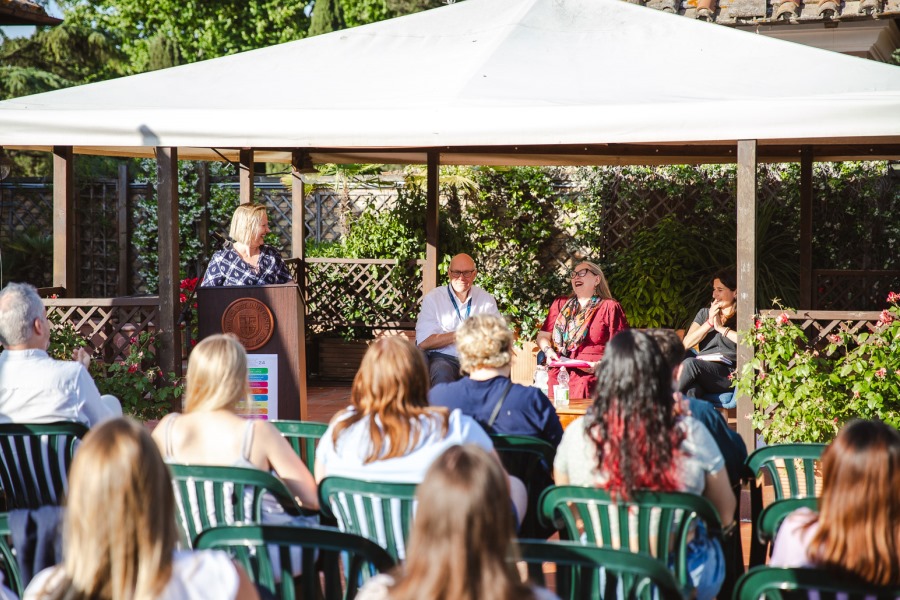Italian Opera on Film: A Journey Through its Cinematic Representation
JCU English Professor David Castronuovo presented “Italian Opera on Film” in the Aula Magna on September 30, in full compliance with the current Covid prevention rules. Professor Castronuovo, who holds degrees in Music History and Operatic Stage Direction and has a Ph.D. in Italian Literature, spoke about the cinematic representation of opera in movies and TV from the 1930s to the 1990s.
Professor Castronuovo introduced the topic by highlighting that even though many are familiar with the aria “Nessun Dorma” from Giacomo Puccini’s Turandot (especially the one performed by Luciano Pavarotti), only a few have seen the complete work at the opera. This is due to the fact that opera requires a lot of investment, not only in terms of production value but also on the viewer’s part. While films and opera share a huge investment as far as production is concerned, streaming services and dedicated websites allow viewers to access movies at a lower cost. As a consequence, the opera has always been fragmented and cinema has always used bits of it throughout the years by way of parody, performance, and intertextuality. Professor Castronuovo showed several movie clips to illustrate the cinematic representation and use of opera.
Opera as Parody
The first two clips explained the use of parody to depict opera in movies. The first one was from the film Captain January (1936), starring box office child star Shirley Temple. The movie was produced in the midst of the Great Depression when the opera was considered a rarefied form of art accessible only to the rich. Shirley Temple is dressed as an opera singer and, together with other characters, she makes fun of opera singing, imitating the gestures, and reducing the lyrics to a simple “La la la.” This scene embodies what many people thought of the opera at the time. The same concept applies to the Marx Brothers’ clip from A Night at the Opera (1935), where the protagonists change the sheet music of the orchestra, having it play the anthem of a baseball game and thus making fun of the wealthy people attending the show.
Opera as a Cultural Phenomenon
A series of clips selected by Professor Castronuovo showed a shift in the representation of opera in movies. In The Hymn to the Nations (1943), a mixed choir served as a homage to the collaborative society of the 1940s that opposed fascism during World War II. In the 1950s, opera became a sort of cultural phenomenon when some TV broadcasters and channels like NBC became interested in it and commissioned shows and opera artists like Giancarlo Menotti and Maria Callas. Moreover, opera served as the soundtrack for TV shows and advertisements. The theme song of the 1950s TV show The Lone Ranger incorporates the overture of Guglielmo Tell by Gioachino Rossini, while Léo Delibes’ Lakmé was used for a British travel commercial. The triumphal and joyful music with the slogan “The world is closer than you think” perfectly matched the stunning images of different places and returned a poetic idea of traveling to the viewer.
Opera and Italian Cinema
The last two clips were taken from two Italian movies: La notte di San Lorenzo (1982) by the Taviani brothers and La Terra Trema (1948) by Luchino Visconti. In both movies, the music is used to underline the mood of the story: while in the first one the shift in the music matches the shift in the mood of the scene, in Visconti’s movie, the music performed by a man playing an opera tune on the clarinet supports a joyful and light-hearted moment of the movie, and, at the same time, foreshadows the acceptance of a cruel destiny.
According to Professor Castronuovo, given that opera and movies have already crossed paths several times in history, it is very likely that it will happen again in the future, and cinema may contribute to the wider circulation of this art form.






